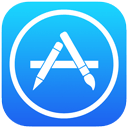Kirk McElhearn, writing for Macworld, returns to the issue of iOS not having the ability to set different default apps:
We’re at iOS 10, and Apple still hasn’t allowed users to make these choices. It seems ridiculous that, with a mature operating system, we’re still locked into Apple’s default apps. It’s not rocket science to make these changes; after all, there are protocols that funnel requests to specific handlers, the same way they do on the Mac. Let us choose the apps we want to use: It’s time to let iOS users have the same freedom of choice as Mac users.
I’ve argued in favor of third-party default apps many times in the past (see ‘Personalization’ here). Clearly, this isn’t a technical problem per se; I think Apple is more concerned about the strategic and security implications of default apps.
Opening up system default apps to any third-party app could result in users choosing alternatives for Apple Music, Maps, and Photos/Camera (among others). These apps are key to Apple’s ecosystem of services and iPhone experience as a whole. They are essential differentiators, unlike, say, TextEdit or Calendar. The comparison between default apps on macOS and iOS only goes so far – I believe Apple sees certain iPhone apps as more important than their Mac counterparts and critical to controlling the iOS ecosystem.
Should Apple allow a third-party to replace the Health app? What about iMessage (a new platform inside iOS) or FaceTime? Bringing user-configurable default apps to iOS isn’t as easy as flipping a switch – there are ramifications that go beyond opening .txt files in an alternative text editor on macOS.
I think there should be the option to set different defaults for some iOS apps, and I think we will get such feature, albeit in a limited fashion. Look at SiriKit and the rollout of a few domains in iOS 10.0; that’s a good indicator of how Apple tends to tackle these problems. Different default apps would be welcome for iPad productivity (especially the web browser and email client), but I’d be surprised if Apple rolled out extensive support to change just about any default system app on iOS.




